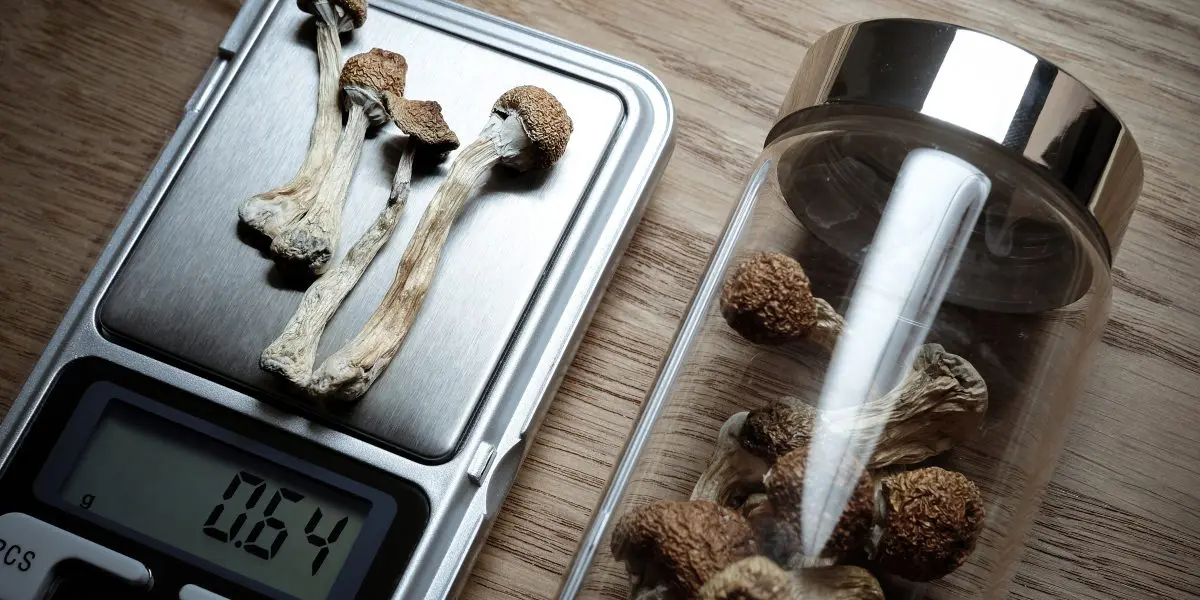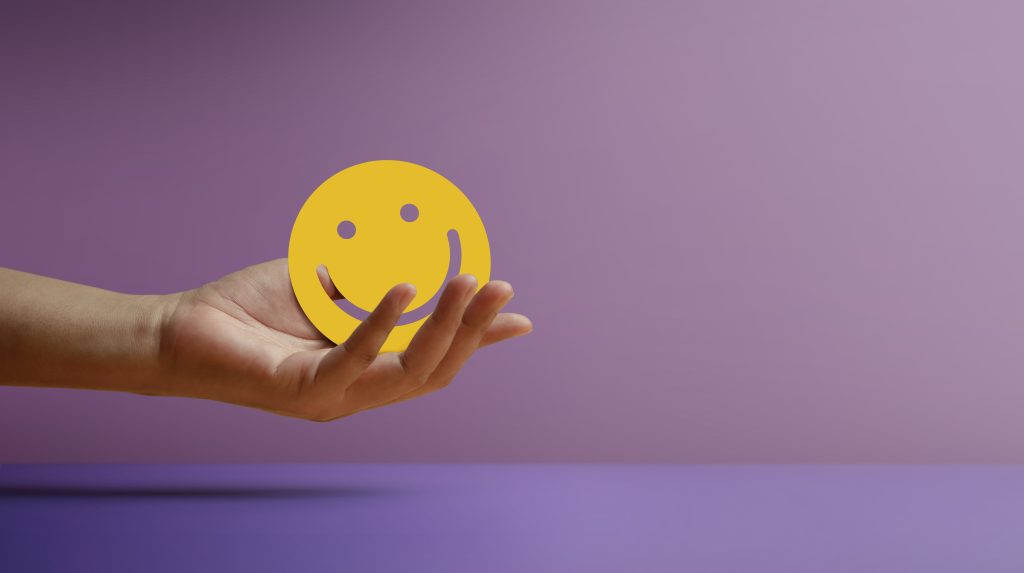
in this article
- Introduction
- Three Things You Need To Understand About Microdosing
- Mistake #1: Not Tracking Microdosing Experiences
- The Value of Tracking
- Why Not Tracking Is A Mistake
- Actionable Steps and Tips
- Conclusion
Are you 18 or older?
Please confirm that your are 18 years of age or older.
You are not allowed to access the page.

Disclaimer: The views and opinions expressed in this article are those of the authors and do not necessarily reflect the official policy or position of Chemical Collective or any associated parties.
Thousands of people are reporting benefits from taking tiny amounts of psychedelic substances.
Yes, the practice known as microdosing. I am sure you have heard of it by now.
Reported benefits range from improved social interaction to a greater sense of wellbeing, to improved cognitive functioning and creativity.
Yet it seems many people who try microdosing do not seem to experience any benefits.
If you have these questions, fear not.
In this two-part blog series on Chemical Collective, Microdosing Mistakes and Solutions, I will be answering all of these questions and more. I will look at three of the most common mistakes people make when microdosing, and for each one give a solution. One by one, we will look at each mistake, its solution, and explore their importance in successfully microdosing. I will also offer some actionable steps to implement each solution to support you on your way to a beneficial microdosing practice.
In this post, part one, I will look at the importance of tracking. I will explain what it means to track, why it is essential, and why not doing it, especially when you begin, is a mistake. I will then finish with some simple and actionable steps that you can take to begin tracking today.

Before we go further, there are three key points about the effects of psychedelic microdosing that need to be understood. I will cover these three points that will then lay the groundwork to understand the three mistakes and solutions that we will cover in this series.
The benefits of microdosing are experienced on two time scales.
The first is short term. This means that benefits are experienced on the days when one takes a microdose. The very same day, one may feel that things run just a little more smoothly. Their mood is a little bit better, or they are a little more positive.
The second time frame is long term. This means that benefits are experienced on a longer time frame. This means that someone may only start experiencing benefits from microdosing after a number of weeks. It may take some time for any benefits to be perceived. Even then, they may only be experienced as gradual improvements, rather than overnight changes.
For example, it might be the case that someone starts microdosing four days a week, and they do not notice any positive effects right away. However, after one month, they start to notice benefits; their brain feels like it is working a bit better and they are more emotionally open.
It is not understood exactly how this works but one theory is that the benefits of microdosing are related to neuroplasticity, the brain’s ability to reorganise itself. Psychedelics have been shown to increase this process, but it can take time as the brain adapts and forms new neural connections. Another theory is that microdosing works by affecting cellular processes involved in mood regulation, cognition, and other functions. These changes may be gradual and require sustained use for noticeable effects.
It is important to remember that however microdosing works, thousands of people have reported that their benefits did not come immediately and but were experienced on a long term time frame.
The second important thing to remember is that psychedelics affect people differently.
Importantly, this includes dose. Like any other substance, there is a variability amongst people in their tolerance and sensitivity. This is also true with doses in the microdose range.
For one person, a standard 0.1 gram dose of dried mushrooms is an ideal microdose. It would make their day a bit better and not interfere in any negative way.
However, for another person, this same dose might bring about a level of anxiety, irritability, or restlessness. This person may find that this dose is too high, and would find a dose of half that, for example, 0.05 grams to be more suitable.
This individual variability can also apply to any benefits felt. For example, someone may find that microdosing helps them creatively, whereas someone else finds that their primary benefit is with mood.
The third important thing to remember about microdosing is that the benefits are subtle.
Microdosing by its very nature is using very small amounts of psychedelics. The effects are not obvious and huge, like they are with full doses. Microdosing effects have been termed as ‘sub-psychedelic’. Sub-psychedelic means below psychedelic, meaning that the effects are below usual psychedelic effects. There are no large visual distortions, walls moving or melting, no repressed memories coming up, or any other radical changes to awareness, like music sounding wider and colours appearing more vibrant.
The benefits of microdosing, as well as the effects, are also subtle.
James Fadiman, one of the leading figures and researchers in the microdosing movement, has commented that the term ‘a little’ seems to be a theme when people are reporting their effects in microdosing. He gives examples of people saying their day was ‘a little’ better, things went ‘a little’ more smoothly, or people reporting that they seem to be thinking ‘a little’ more clearly.
With microdosing, the changes in people’s experiences of their daily lives are not radically different. They are subtle.

Now we have covered these three foundational pieces, let us begin with the first mistake people make when they begin microdosing: not tracking their experiences.
Tracking your microdosing experience means consistently recording key details and information during your microdosing period. These can include things such as the precise dosage taken, the time of day, and your mood and energy levels.
One tracking entry could be as simple as noting in a journal, “Took 0.2g at 8 AM, felt increased focus and calm by midday”.
It might also include a rating on a metric for an intention of the microdosing practice. For example, if an intention was to improve focus, focus could be rated on a scale of 1-5 each day. It could also include other details like if it was taken before breakfast, and a rating or comment on other variables, such as energy or productivity. Whatever details are recorded should be done consistently.
As the name suggests, this process of recording information helps to keep track of microdosing experiences.
Many people skip doing this because they think that the benefits of microdosing come quickly and should be obvious and immediately noticeable. Because of this they think that there is no need to keep making records. It might also be because they think that keeping a record of their doses and reactions is too time-consuming or only for analytical people.
Another reason why people do not track is that they are simply not aware of the benefits of tracking, especially when starting out. It seems like an extra and unnecessary step that is not needed to get benefits.
The value of tracking is that it helps you to identify patterns and trends in your microdosing experience.
For example, after some experimentation and a few times microdosing, you might notice that on days when you take a lower dose, say 0.1 grams of mushrooms, you feel more calm and focused. You might find out that with a slightly higher dose, like 0.15 grams, you consistently feel overstimulated or anxious. You might also see from your records that you experience nausea when taking your microdose after breakfast, but not when you take it on an empty stomach.
If you are tracking, you can notice these patterns and use them to inform your decisions about how to adjust your dosing or protocol for best results. In this case, you would likely keep your doses to 0.1 grams and take them before breakfast.
Tracking your microdoses is also valuable because it allows you to gather and assess long-term data. As some of the benefits of microdosing can develop gradually, your records are valuable to view your changes over time. With records from consistent tracking, you can look back after several weeks to identify trends and patterns that might not be immediately apparent. You can see what is improving and what is not.
Recording data or information on mood, energy levels, productivity, sleep quality, and even diet can provide a more complete picture of how microdosing is affecting your life.
For example, tracking your mood daily can reveal if your microdosing is helping to stabilise your emotions or not. Similarly, monitoring your productivity levels can help you determine whether your doses are working to that end, or may give useful information about the timing of the dose. Over time, these patterns become clearer, allowing you to tailor your microdosing protocol to better suit your needs and goals.
People do not track because they believe that all they need to do is to take a microdose and the benefits will come. The problem with this approach is that there is no careful observation of the experience, and no recorded information to see patterns or make adjustments.
Without a clear record of things like when you took your doses, how much you took, and how you felt throughout the day, it can be very difficult to identify patterns or understand what is working. You might be wondering why on some days you feel more focused and productive, while other days you seem off. Without tracking, these fluctuations might seem random, but when we look at the records we find that they correlate with specific doses, timing, or other factors that would have otherwise gone unnoticed. Making adjustments to your dosing or schedule can then become a bit of a guessing game. You might end up taking too much or too little, or at times of the day that do not work best for you.
Furthermore, without the information to assess how microdosing is affecting you in the bigger picture, long-term benefits can go unnoticed. You might conclude that microdosing is not effective for you and prematurely give up on it altogether.

So now I have made my argument about the importance of tracking, you might be thinking: “OK! How do I do it?”
The good news is that effective tracking does not have to be complicated. You can do it in a way that suits you. I will finish by sharing some actionable steps and tips to help you on your way.
The first thing to do is decide how you will gather your information. Some people prefer traditional methods like journaling, whilst others prefer a digital solution.
If you prefer a hands-on approach, start with a physical journal. Create a section for your microdosing practice where you can record daily entries. You can use bullet journaling techniques to organise your data.
If you prefer a digital option, consider using a digital app designed for tracking habits or one specific to microdosing. Apps like Microdose.me or other microdosing apps can provide you with structured templates and reminders to ensure consistency and offer features like daily reminders, mood scales, and trend analysis.
Next, decide what you are going to record. To start, you can keep it simple, and include the basics:
Notes on the experience can include anything that seems notable, and if nothing, just a few words about how you felt the day went. This might include things like ‘good mood’, ‘productive day’, ‘tingling sensations in the morning’ etc. You can include timestamps where they seem relevant, like ‘tingling sensations’, so you can see how long after taking the dose you felt them.
Other things you may wish to track:
If you are using a digital app, some will have templates for what to track within them, and some will help you decide what to track too.
Consistency is key to gathering data. Make it a habit to track every day, even on days when you do not microdose. This will help you understand the broader context of your life and how microdosing fits into it.
Set aside time at the end of each week or two to review your entries. Look for patterns in your mood, productivity, and overall well-being. Use this information to make informed decisions about adjusting your dosage, timing, or other aspects of your routine.
If you notice certain doses or times of day work better for you, adjust your regimen accordingly. Do not be afraid to experiment within safe boundaries, but always make changes based on the data you have gathered.
Consider using additional tools like mood tracking apps, productivity software, or sleep monitors to complement your journal or app entries. These can provide more objective data points to enhance your understanding.
By following these steps, you can create a tracking system that helps you fine-tune your microdosing practice and gives you confidence by making informed decisions based on your data. As you continue to track and review your progress, you will find it easier to optimise your experience and achieve benefits.
So there we have it; the first part of this two part series on microdosing mistakes and solutions.
Remember, the full benefits from microdosing often unfold gradually over time, effects can vary significantly from person to person, and unlike macrodosing, the effects of microdosing are subtle. By tracking, you will be able to have the long-term perspective needed to recognize subtle yet significant changes, and be in a better position to adjust your protocol and experience benefits. Tracking can be done simply and need not take more than five minutes a day. For the rewards that it can bring, it is no brainer!
In the next post of this series on Chemical Collective, I will explore another two common microdosing mistakes, and offer solutions to them to help you make the most of microdosing.
See you then!
John Robertson | Community Blogger at Chemical Collective | mapsofthemind.com
John is one of our community bloggers here at Chemical Collective. If you’re interested in joining our blogging team and getting paid to write about subjects you’re passionate about, please reach out to David via email at blog@chemical-collective.com

Welcome to Chemical Collective.
Create an account to earn 200 welcome points.
Already have an account? Sign in


Check out our Community Blog and get involved with the conversation. You will be awarded 50 x ChemCoins for each comment up to a limit of 250 total ChemCoins.


Have you purchased any of our products? Reviews and reports are so important to the community. Share your honest opinion, and we’ll reward you with 50 ChemCoins for each review!


Every time you complete an order with us, you’ll be awarded ChemCoins for each Euro spent.
Welcome to Chemical Collective.
Create an account to earn 200 welcome points.
Already have an account? Sign in

Earn commission every time someone makes a purchase through your link.
When you become an affiliate, you will be allocated a unique link to share with your friends, followers, subscribers, or Aunt Susan.
You can choose to payout the commission earned once per month, or save it up to receive on a rainy day! Commission earned is 5% of the total order value per referral.
Contact us to join the Chemical Collective family and become an affiliate.
share your toughts
Join the Conversation.